Toyota Series Championship Preview
Get ready for the season finale on Lake Cumberland
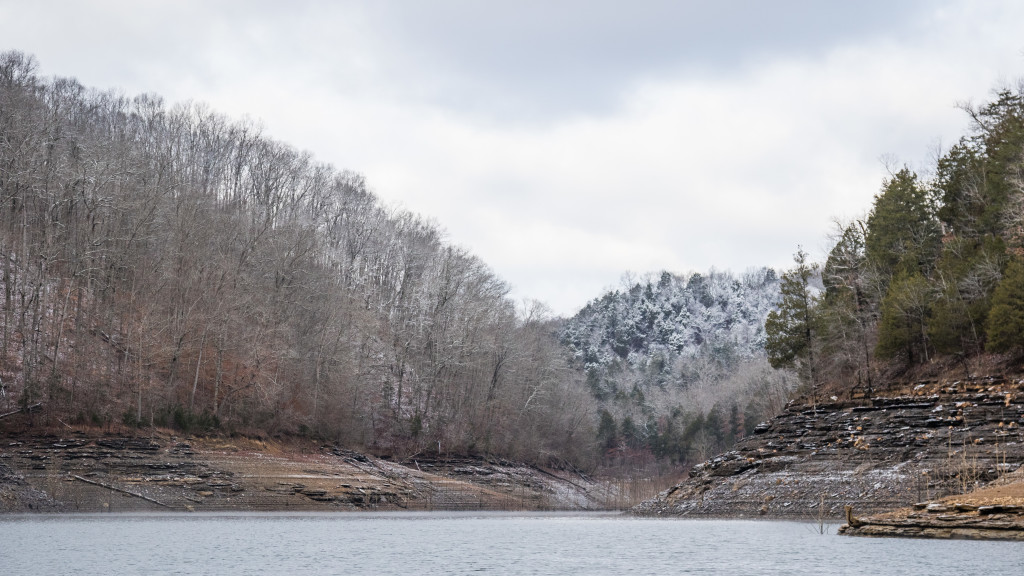
The 2020 Toyota Series Championship on Lake Cumberland is going to be a showdown of epic proportions. Taking place December 3-5, the event brings together hundreds of pro and amateur anglers from FLW’s various championship events, the best from the eight Toyota Series divisions, plus some international contenders.
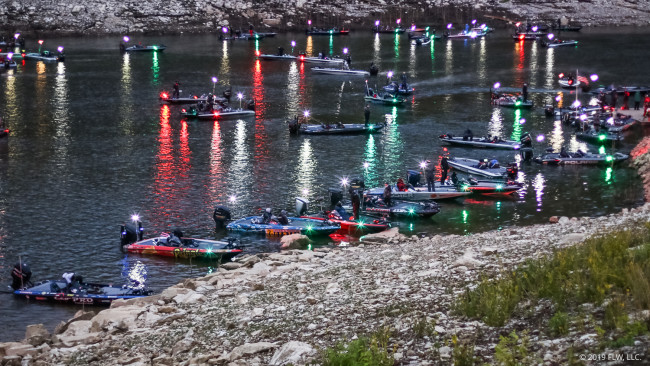
Who’s gonna be there
The championship roster is impressive, with stout locals, phenomenal regional anglers, and some of the best pros in the world. Jacob Wheeler headlines the field, but he’s far from the only tour-level pro in contention, and the rest of the qualifiers are also deserving and talented.
This year, the Toyota Series Championship field is made up of the top 25 pros and co-anglers from each division, plus top finishers from the Abu Garcia College Fishing National Championship, The Bass Federation, the Phoenix Bass Fishing League All-American and FLW’s international ranks.
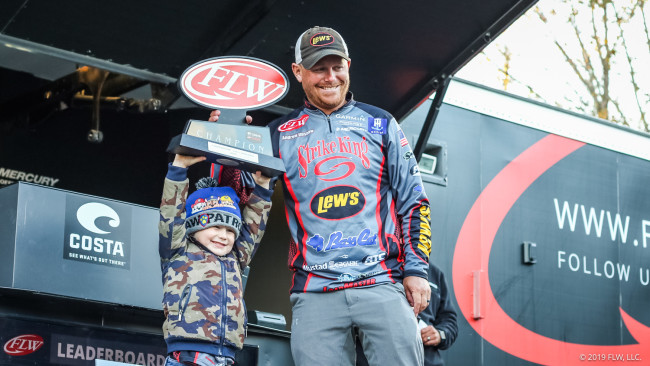
What is at stake
The Toyota Series Championship is the most lucrative Triple-A event in the world. First place on the pro side is $200,000 cash, plus contingency bonuses, such as the $35,000 FLW Phoenix Bonus. There’s also an additional $10,000 bonus for the highest-finishing pro from each of the eight U.S. Toyota Series divisions and the International Division. If the winner runs the right boat and qualified via the Toyota Series, they’ll take home nearly $245,000 or more for three days of fishing. The winning co-angler at the Championship earns a $33,500 Phoenix 518 Pro bass boat powered by a 115-hp outboard.
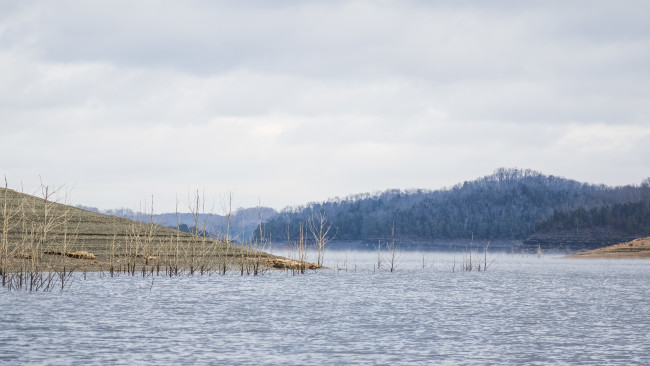
About the fishery
The ninth largest reservoir in the U.S., Lake Cumberland is a perfect stage for the Championship. Home to all three bass species and over 1,000 miles of shoreline, the lake can swallow up a big field with relative ease.
Impounded in 1952 with the construction of the Wolf Creek Dam, Lake Cumberland serves as both a flood-control reservoir and a source of hydroelectric power generation. While Cumberland experienced issues with low water levels due to repair work being done on the Wolf Creek Dam back in 2011, water levels have returned closer to normal in the last five or so years with the completion of dam repair work.
Still, Cumberland is like other mountain reservoirs in that the water level fluctuates immensely. This week, the lake is about 30 feet below full pool. Though 30 feet sounds like a lot, and would drain most Florida lakes, it’s actually totally normal for Cumberland in the fall.
Cumberland offers great opportunities for targeting both largemouth and smallmouth (as well as spotted bass, though they aren’t likely to anchor anyone’s bag). With the smallmouth length limit being bumped down to 15 inches for this event from the standard 18 inches on Cumberland, you can expect to see a lot of brown at the scales.
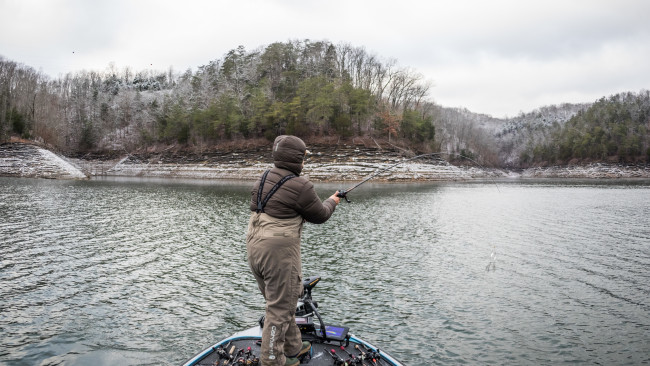
Current conditions
For the start of practice, Cumberland appears to be offering some prime conditions. Ryan Davidson reports that the water clarity is good, with the temperature in the 50s and low 60s. Historically, mountain lakes like Cumberland and Dale Hollow fish best in the winter, but it may not quite be winter yet.
“With this tournament being a month later than last year, I think everyone anticipated it would be more full-blown winter fishing, instead of the fall transition,” says Davidson, who hails from Branchland, West Virginia. “But, we just haven’t had any cool weather here, or cold weather. So, as far as local tournaments go, the weights have still been unseasonably low.
“Usually by the time you hit mid-November, you start seeing the low 60s, high 50s water temperatures and the fish get in more predictable places, or places you can target them winding a crankbait or something on the bank. We saw that play a little last year, but not to the extent that it’s capable of. Lake Cumberland is plumb full of largemouth, smallmouth and spots, and good quality, and we didn’t see the weights it can kick out last year.”
This year, with the lake cooler, it could really shine.
“Looking at the forecast, we’re going to have some weather move in, and some really cold days in practice,” says Davidson. “In practice, it really might not indicate what the lake can do, but I think in the tournament things could change substantially.
“All these high mountain reservoirs are very conditional. If we get the wind, and a good front rolling through, then these fish bite. That’s as important as the cooler weather. If Thursday and Friday roll around, and we’ve got 10- and 15-mile-per-hour winds, then we’ll catch ‘em in a big way.”
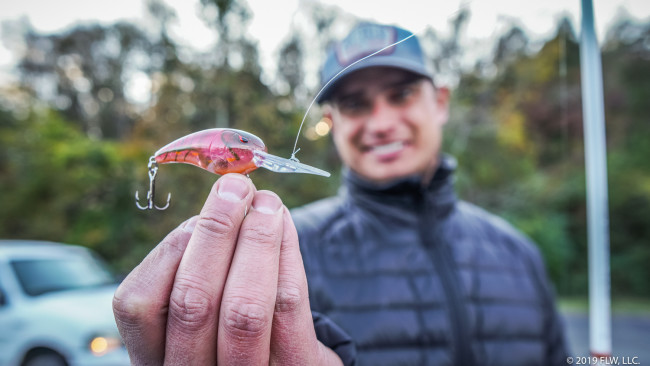
Baits and techniques
Last year, Andrew Upshaw won the championship with a jig on bluff banks. It was a classic mountain pattern and he executed it perfectly. Behind him, some pros flipped or wound up the river, but the predominant pattern was cranking for smallmouths down the lake.
Cranking for winter smallmouths
This year, almost everything that worked in 2019 could work again, but perhaps with a more wintertime bent. In 2019, the predominant bait was a SPRO RKCrawler 55 cranked for smallmouths on rock in the lower end of the main lake. Other baits included such wild cards as a frog, a Berkley Choppo and a spinnerbait.
This year, with the weather colder, the traditional jig and cranking patterns should play well. Of course, smallmouths are always susceptible to a swimbait and a jerkbait, and you can’t count out finesse when 200-plus boats are involved.
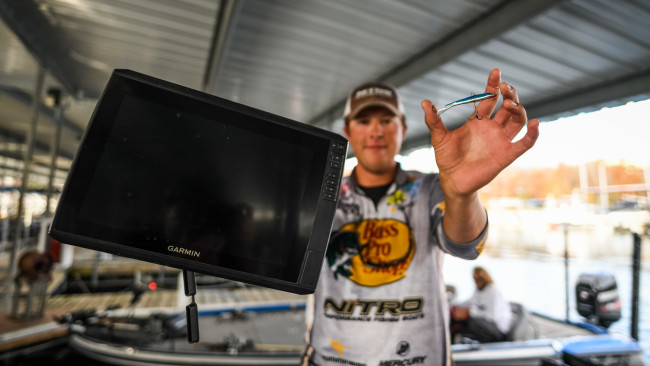
The LiveScope factor
Another factor unique to 2020 is LiveScope. This year has seen forward-facing sonar take the fishing world by storm, and though some anglers had and employed it in the 2019 championship on Cumberland, it wasn’t much of a factor and suspended or roaming offshore fish didn’t make headlines.
This time around, that could change. This year more than any other, pros have been rigging up their boats with what Scott Dobson terms a “sniper rifle” to seek out offshore and suspended fish. Additionally, this event has some of the best LiveScope anglers in the country in it. Wheeler has made waves with his boat rigging, but Cody Huff has won two Toyota Series events just this year with forward-looking sonar, and Spencer Shuffield almost won the Tackle Warehouse Pro Circuit Angler of the Year title, and most of his best finishes came with a heavy dose of LiveScope.
Traditional tactics might win again – the old-school has had a place in the mountains for a long time. But this event could put a real exclamation point on a season filled with electronic enhancement.
Tournament Details
Format: All boaters and co-anglers will compete for two days. The top 10 boaters and co-anglers based on cumulative weight after two days of competition will advance to the third and final round, with the winner in each division determined by the heaviest cumulative three-day weight.
Takeoff Time: 7:30 a.m. ET
Takeoff Location: General Burnside Island State Park, 8801 S Highway 27, Burnside, Ky.
Weigh-In Time: 2:30 p.m. ET
Weigh-In Location: General Burnside Island State Park